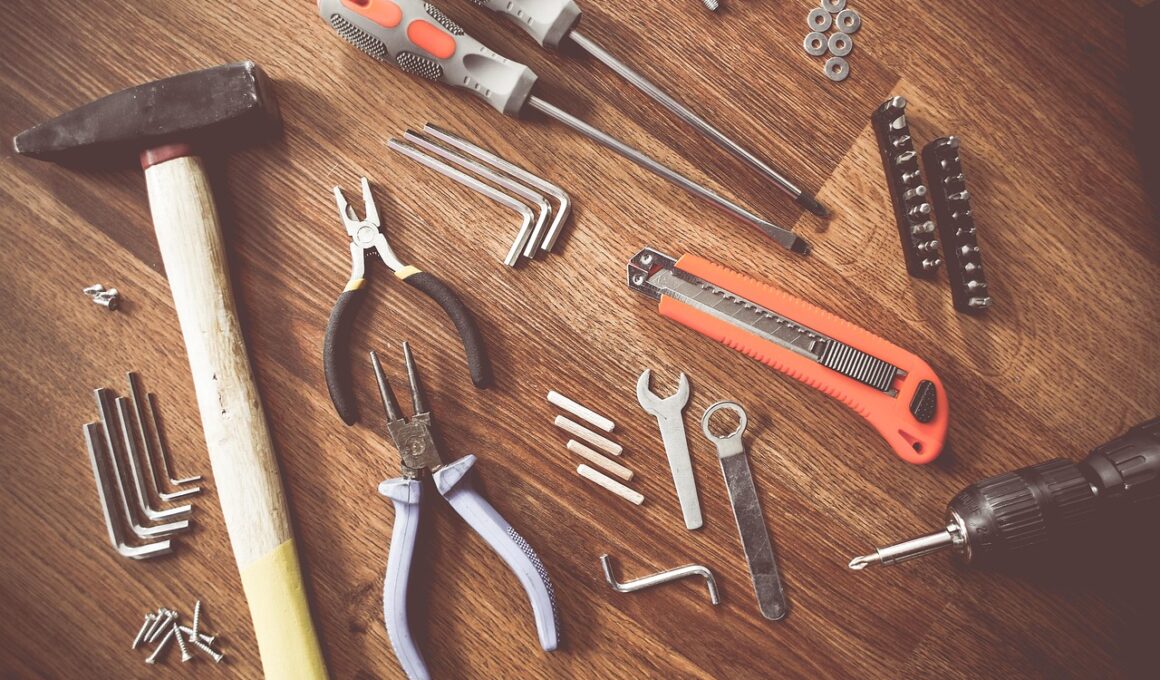How to Deal with Rust and Corrosion on Functional Fitness Equipment
Rust and corrosion are common problems faced by owners of functional fitness equipment. These issues can severely impact the longevity and functionality of your gear, leading to safety risks during workouts. To combat these problems, it is essential to understand why they occur and how to prevent them. Moisture, sweat, and neglect are some primary contributors leading to rust formation on metallic components like weights and frames. Regularly inspect your equipment for any signs of corrosion, as early detection can mitigate further damage. Using rust-proof coatings, applying lubricants, and ensuring proper ventilation in your storage area can make a substantial difference. Keeping your equipment clean not only enhances performance but also extends its life. In this article, we will explore detailed maintenance strategies that every fitness enthusiast should know, allowing them to address rust and corrosion effectively. Taking the time to maintain your functional fitness equipment properly will result in safer workouts and better equipment performance. By following the guidelines, you can maintain both the aesthetics and functionality of your fitness gear.
One effective strategy for dealing with rust is to frequently clean and dry your functional fitness equipment. Cleaning involves removing dirt, sweat, and moisture, which can encourage rust growth. Use a mild detergent and warm water to wipe down surfaces. Once cleaned, dry the metal parts completely with a soft cloth. This step should be part of your routine maintenance, ideally performed after every workout session, especially in humid environments. Additionally, you can apply a thin layer of protective oil or aerosol lubricants designed for metal surfaces. These products create a barrier against moisture, reducing corrosion risks significantly. When applying, make sure to avoid excess lubrication that can attract dirt and grime. Regular moisturizing keeps your equipment in top shape and enhances usability during workouts. Store your functional fitness equipment in a dry, well-ventilated area to minimize exposure to humidity, as this is critical to prolonging its life. If applicable, consider using moisture absorbers or desiccants in storage areas. These small steps can greatly contribute to extended gear durability.
Inspecting your equipment regularly is essential to prevent rust and corrosion from worsening. Check for minor signs of rust, such as discoloration or pitting, particularly in hidden areas that often go unnoticed. Use a soft brush or cloth to remove light rust directly from the surface. If you notice heavier rust buildup, sandpaper or a wire brush might be necessary, but ensure you’re careful to avoid damaging surrounding surfaces. After cleaning, it’s important to protect exposed metal with an appropriate rust-inhibiting spray or paint. When you apply paint, choose options specifically designed for fitness equipment to withstand the rigors of workouts. It serves as an effective barrier against moisture. Once the application is complete, allow it to cure fully before using the equipment again, ensuring an optimal protective layer. Furthermore, documenting your inspection and maintenance schedule can be highly beneficial. Keeping track allows you to monitor which equipment requires more attention. Establish a routine maintenance calendar as part of your fitness equipment care.
Storage Considerations for Fitness Equipment
Storage conditions are crucial when it comes to combating rust and corrosion on functional fitness equipment. If you live in a climate with high humidity, consider investing in climate-controlled storage for your gear. When improperly stored, equipment can quickly succumb to rust, undermining its usability and safety. It’s advisable to disassemble movable parts when possible, such as weights and benches, making them easier to wipe down and store compactly. Ensure that painted surfaces do not come into contact with metal parts that are prone to rust to avoid sticking or further damage. Elevate your equipment off the ground using shelves or racks to reduce moisture exposure. This practice will not only help avoid direct contact with potential puddles but also enhance airflow around the items. If you must store equipment outdoors, invest in high-quality protective covers to shield against the elements. Regularly check the outdoor equipment to ensure that there are no signs of rust developing. Following these recommendations can significantly increase the lifespan of your fitness gear.
For those with a busy workout routine, knowing how to manage rust and corrosion while meeting tight schedules can be challenging. However, proper planning can make maintenance much easier. Consider setting a specific day each month dedicated solely to equipment maintenance and cleaning. Establishing a routine can reduce the chances of rust forming by ensuring that your gear maintains regular exposure to care. Choosing to use non-corrosive materials can drastically limit the impact of moisture. Look for stainless steel or aluminum options when purchasing new gear, as they are naturally more resistant to rust. At the same time, educate yourself about the specific needs of the equipment you own. Different materials and finishes may require unique care protocols, so do not hesitate to consult the manufacturer’s guidelines. Remember, investing in high-quality equipment may entail a higher upfront cost, but it pays off immensely in reduced repairs and longer equipment lifespans. Engaging with a community of fitness enthusiasts can provide additional maintenance tips tailored to specific equipment types.
The Importance of Proper Care
Understanding the importance of proper care for your functional fitness equipment extends beyond just avoiding rust and corrosion. Investing in regular maintenance ensures that your gear continues to perform optimally, maintaining its effectiveness during workouts. When equipment is well-maintained, it minimizes the risk of injury caused by technical failures. A solid grip on your fitness equipment, resulting from proper care, supports better performance, allowing users to maximize their workouts safely. Moreover, preventing rust is not only about safety; an aesthetically pleasing appearance boosts motivation as well. No one wants to work out on discolored or rusted equipment, as it can be demoralizing. Mechanical issues may arise if rust compromises joints or critical structural supports; thus, addressing these concerns promptly is paramount. Regular care routines, such as cleaning, inspecting, and lubricating, contribute significantly to preserving gear aesthetics and functionality. Consistently investing effort into the maintenance of your fitness gear serves as an investment in your health journey, reinforcing the long-term benefits that come from well-preserved equipment.
Finally, consider seeking professional help for extensive rust issues. If you discover significant corrosion or damage that basic maintenance cannot resolve, contacting a qualified technician might be necessary. They can conduct thorough inspections and repairs that ensure safety and functionality. In the worst-case scenarios, rust may compromise the integrity of your equipment to the point that replacement is the only option left. However, the strategies discussed above can prolong the life of your equipment and help avoid this situation altogether. Regularly assess and amend your maintenance routine based on the efficacy of your current strategies. Learning from the wear and tear that your gear experiences during use is vital. The process becomes easier as you understand the specific challenges faced by your functional fitness equipment. Stay informed about innovative approaches and preventive measures, and don’t hesitate to share your findings with your fitness community. Collaboration and knowledge-sharing among fitness enthusiasts can undoubtedly lead to better care, allowing everyone to reap the benefits of durable, rust-free gear.


